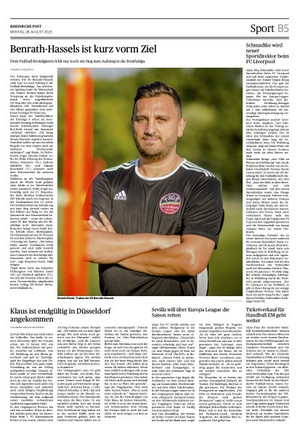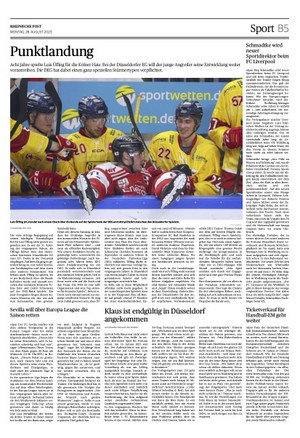Automated Newspaper Layouting
Motivation
The motivation for this research project stems from the manual and time-consuming nature of document layout, which can lead to increased costs and production delays. Designing aesthetically pleasing layouts is a challenging and multifaceted task that requires a diverse range of skills. Especially when dealing with numerous documents with varying content, the manual creation of visually appealing layouts becomes a considerable bottleneck. Automating aesthetic layout creation is therefore becoming an increasingly important task. The ability to automate this process has the potential to save valuable time and resources. To enable this automation, it is essential to develop algorithms that are able to measure aesthetics of document layouts. While the current literature offers basic theoretical concepts and mathematical formulas as potential aesthetic benchmarks, the practical implementation of these measures has yet to be explored.
The layout (optimization) problem (LP) is a combinatorial optimization problem that focuses on strategically arranging objects within a specified layout. The primary goal is to identify the ideal arrangement based on specific criteria or objectives, while adhering to constraints related to factors such as shape, size, orientation, weight, or the distance between objects. A common example of this is organizing the articles of a newspaper on a page. The objective is to create a layout, such that most space of the newspaper page is utilized and guarantees an aesthetic appeal. Constraints include the non-overlap and adherence to the page’s dimensions, the size and shape of the articles, their text, heading, subheading, pictures etc. The optimal arrangement would satisfy these constraints, creating a pleasant and practical layout.
In this project, we develop an automated layout system based on the practical case of newspaper layouting with a major german newspaper publisher. We gathered data and manually created layouts that can be used for evaluation. We developed a prototype based on a genetic algorithm that already successfully layouts basic text-elements. The entire process consists of the steps:
- article superset creation based on article-inherent variables, such as image size, article column width, etc.
- optimization using a genetic algorithm. As fitness function, we develop aesthetic measures.
- visualization of created articles (PDFs) using an interactive, web-based UI that allows for articles repositioning. If articles are repositioned, we return to step (2)
- export final PDF to In-Design
We set the focus on the design and implementation of the artifact, which provides a good fit to the design science research (DSR) framework.
Goal
This project aims to find possible solutions for the layout optimization problem (LP) in the context of newspaper layouts. This problem involves determining the best position and orientation of each object to minimize a certain objective function, such as the total area, the wasted space, or the wire length. The focus is on identifying constraints - aesthetic measures - in the layout of newspapers and the question of how these costraints can be implemented to solve the overall layout problem. Finding solutions for the layout problem a two-dimensional space possibly contributes to strategically arranging objects in higher dimensional spaces like in the palettization optimization problem in three-dimensional spaces.
The goal of this project is to determine the optimal layout of elements based on predefined criteria or objectives, subject to constraints such as shape, size, orientation, weight, or inter-object distance. We aim to generate a layout that maximizes the utilization of the newspaper page space and ensures a high level of aesthetic quality. This is done by providing an overview of aesthetic measures found in literature and identified during expert interviews. The resulting overview is then utilized for a conceptualization and development of fitness functions calculating the aesthetic measures as artifact and the implementation of these fitness functions in a layouting software.

